Starting with Raiders of the Lost Ark, we’re taking a look back at Lucasfilm’s other giant franchise and the ways it shaped the modern blockbuster. Stay tuned for all the latest Indiana Jones 5 news here.
RAIDERS OF THE LOST ARK
Make that Indiana Jones and the Raiders of the Lost Ark, so re-christened in the late ’90s / early ’00s as Lucasfilm prepared to release the film and television series to home video and was looking for some consistency for marketing purposes. Not that it really matters; a rose by any other name, etc., etc. And Raiders of the Lost Ark is a rose of a film – a dusty, blood-splattered, face-melting rose.
It speaks to the popularity of that other franchise George Lucas was working on in the late ’70s / early ’80s that Indiana Jones is still only the runner-up most successful series he created, and in its way an even greater forerunner of what tentpole entertainment filmmaking would become.
Its aspirations were never quite as high as its sibling, but the execution was often so much better that became a calling card of its own.
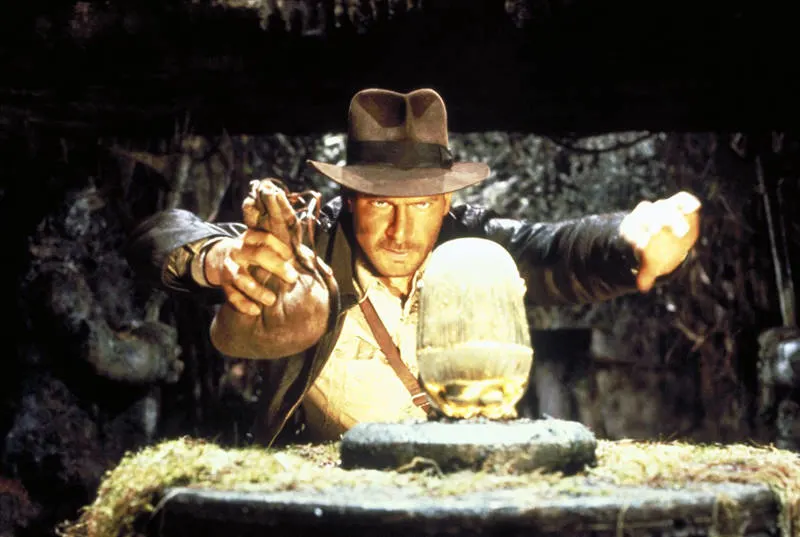
Because it is not quite so influential as Star Wars (and, really, how many films are?), the details of its creation myth haven’t been as widely absorbed and contested, which makes the film itself easier to break down. And because it is the product of a true collaboration at the earliest stages of conception, it also means there is a little bit less to find once all the rubble has been sifted.
That is not a slight as an attempt to make a raw popcorn film was Lucas’ original intent behind Star Wars; an intent Raiders much more successfully carried out. How is that possible considering the competition?
Certainly, the fact that it has a singular focus helps. The ensemble of Star Wars (and so many other action films, including all of Raiders’ direct descendants) is ditched in favor of one man who is really only interested in one thing. It allows for more time (on and off screen) to dig into Jones’ character, more time for star Harrison Ford to get comfortable in his skin and decide what to imbue him with, and more time to spend with him chasing his goal.
Because it’s not just singularly focused on its lead character but on its entire worldview. Seldom does our view leave Indiana to encompass some omnipotent view of the world. We generally only know important things when Jones knows it and we generally only know what he thinks of the world unless someone directly confronts him.
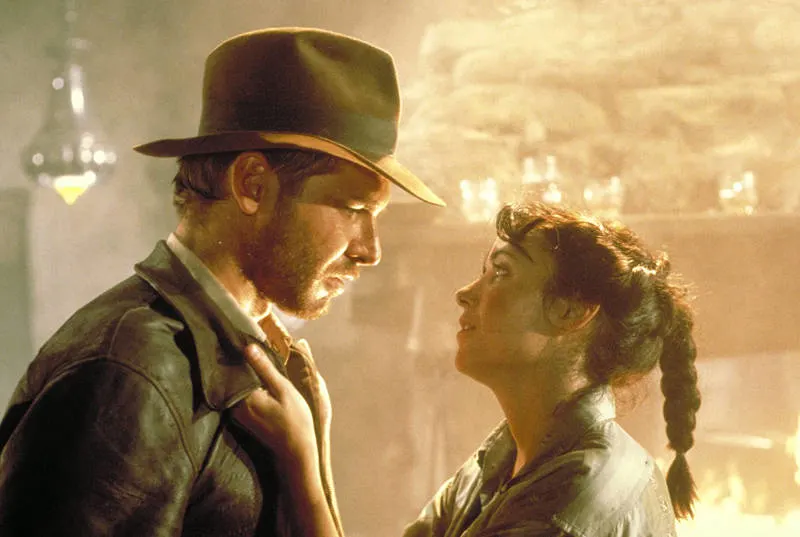
The old saying ‘a hero is only as interesting as his villain’ is given its lie in the Indiana Jones films as none of the antagonists are ever up to par with him and yet this fact seldom impacts the end result the way it does in the series’ imitators. There are no strange henchmen with singular idiosyncrasies the way Jones’ oft-noted inspiration James Bond came to rely on. In fact, with a few exceptions, they are generally interchangeable.
Some visual clues are occasionally created to tell them apart, standing in lieu of actual personalities or character traits. But more often they are an array of faceless villains, usually in a uniform signifying bureaucratic state tyranny, with banal motivations centering around glory and/or some sort of reward.
In that regard, Indiana is frequently (and intentionally) not too different from the monsters he faces except for the degree of his ambition. His ‘goodness’ comes from having at least some things he won’t do, and yet he never seems to be a true anti-hero.
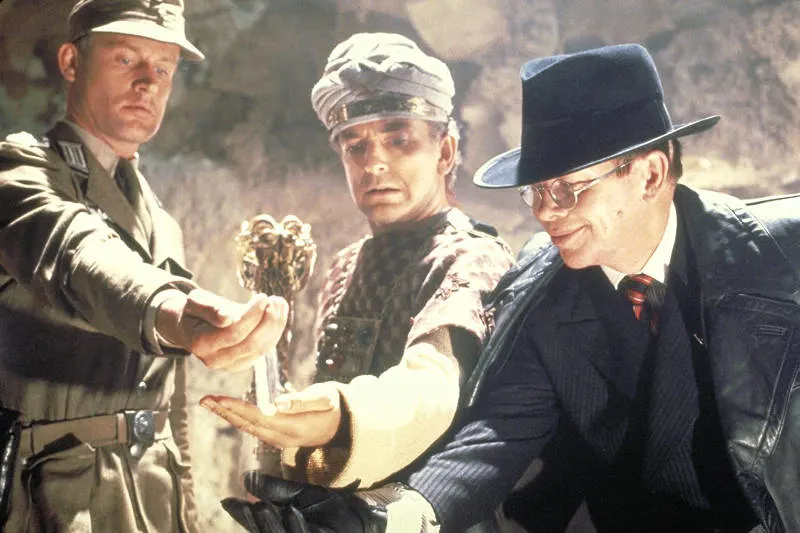
It’s more that he has complexities and wants and desires that are not necessarily true blue and which add shades of nuance to a straightforward adventure film.
There’s a reality to him (beyond just the punishment he takes) beneath the bluster and bullsh*t that makes it easier to follow him, a choice that influenced many of the action movie characters of the decade to follow (especially Die Hard).
That mindset carries through the rest of the film (and series) as well as it is set in the real world, so to speak. Though things are stretched and mutated — dark corners are opened to let the fantastic through — the vast world-building a pure fantasy story requires isn’t needed. Instead, the imagination spent on that sort of thing is re-oriented towards character interaction and set pieces.

And oh, the set pieces. There is probably no one thing that made the Indiana Jones films attach themselves to the popular imagination so successfully, but it is easy to make the argument that the series’ incredible adventure sequences were a fundamental part of it.
The lack of a new world to create (if not explore) also means there are fewer openings for experimenting with art direction, with mise en scène or color which Lucas had been indulging himself in, allowing the focus to remain rooted in how the world was portrayed. There are ancient temples galore, but with a few exceptions, they are in some way related to places that existed, an enhanced reality as opposed to a pure fantasy. [Which sets the stage for some pushback when the series does try and go that far].
Color palettes are generally kept to earth tones or gun metals without a lot of strange mixtures bouncing across spectrums. It’s a choice that works well with director Steven Spielberg and cameraman Douglas Slocombe’s decision to use deep-focus photography on the series, which would not have been sustainable if there were a slue of shiny objects in the frame at any time.

The goal becomes, instead, within this world of amazing adventures, to replicate the human eye with only occasional sharp close-ups. It’s all about recreation rather than creation, which means much of that work doesn’t stand out on its own and can be harder to appreciate unless you specifically go looking for it.
It’s not an anti-Star Wars by any stretch of the imagination but the nature of opened the door for Spielberg and Lucas to make consciously different visual choices to keep it from seeming derivative of its fantasy forebear. The black and whites of outer space are replaced with dusty desert and green jungle. More importantly, the stylized documentary look of Star Wars (and the glitzy soft focus of its sequels) was replaced with Douglas Slocombe’s deep-focus photography and elegant camera movement and composition, creating a view both teeming with life and subconsciously false.
There is still much in common with the other series. Jones is implicitly (and later explicitly) a descendent of the questing knight who anchored the sort of chivalric romance that so influenced Star Wars. In many ways, he is more of a classical knight than those other guys. But with little of the fantasy and none of the experimentation in language. Jones is a hero in a purely 20th-century understanding of the word (frequently because he is aligned with a Western government than for anything he chooses to do) and very much a specifically 1980s version.

More importantly, he speaks as a man of today, with at least some of the nuance and wit of today, further removing the alienness of fantasy from his fantastic adventures. All of which benefits those fantastic set pieces. Because if a real-ish person is doing amazing things in a real-ish environment, then those amazing things must be real-ish as well. Suspension of disbelief is more easily maintained.
Of course, it doesn’t hurt at all that many of the best technicians in Hollywood took what they had learned on Star Wars and applied those lessons to Raiders of the Lost Ark. From sound design to score to visual effects, Raiders doesn’t bother with wholesale innovation, focusing instead on what has been done and honing it to a razor’s edge.
So it’s extremely entertaining and extremely well made, but is it more than that? Can it be? Should it be? It’s the great divide between criticism and lay movie-watching that lies across the faux wall between high and low culture as opposed to the real argument over whether there’s a wall at all.
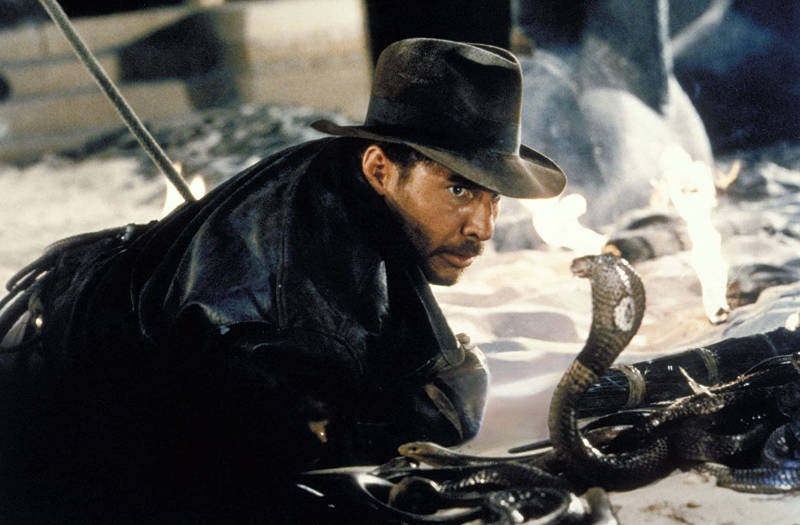
Raiders, along with a handful of other studio films (and for several reasons it is always studio films, Casablanca coming immediately to mind) is one of the great arguments that yes these kinds of film can and should be art (or at least artful) and no, there really is no divide.
What there is, is a vast array of pieces of a whole each of which can produce their own version of greatness.
At some level, this all means settling on an agreed definition of what art is, which is impossible. Like its cousin pornography, we may not be able to describe it directly, but we know it when we see it or, more usually, when we feel it. Art, whatever it is, should evoke some emotional response, and good art should evoke strong ones.
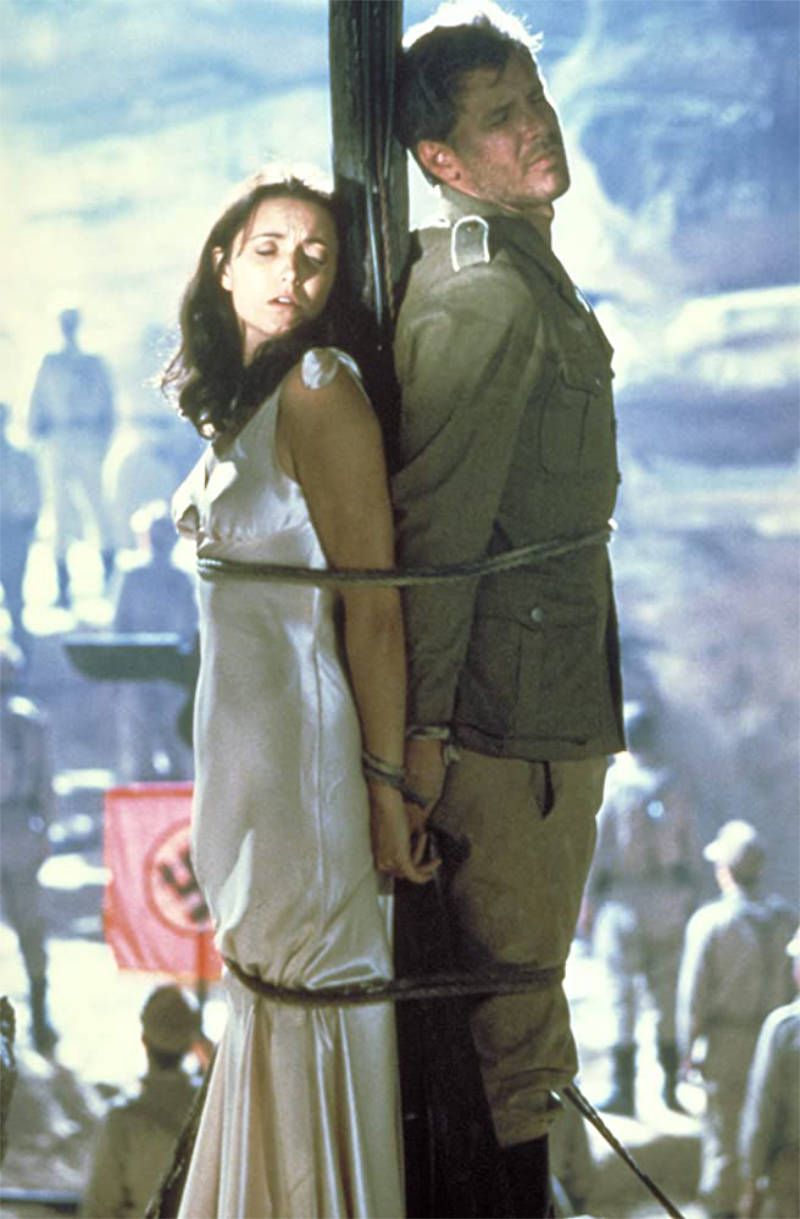
There is no denying Raiders of the Lost Ark evokes feelings. With great skill, it engages the fear and anticipation centers of the brain and then pays them off with a walloping dose of endorphins. Raiders of the Lost Ark is just a fantastically good time. Is there more to it than that? No. Does it matter? No. In the sheer mastery of its execution, Raiders of the Lost Ark is its own specific form of art.
At the 1981 Academy Awards, Raiders of the Lost Ark was nominated for Best Picture alongside eventual winner Chariots of Fire, a character and theme-focused drama (as were all of the other nominees except Raiders) which more easily fits with classic definitions of cinematic art.
In the film, runner and missionary Eric Liddel wonders whether it’s right to spend so much time on something he enjoys, like running, when religious work is out there aching for someone to do it with one clearly, lacking any need for explanation or discussion, more important than the other. “You can praise God by peeling a spud if you peel it to perfection,” his minister father replies. It seems like a bit of an insult to call Raiders of the Lost Ark a magnificent potato, but what it does, it does to perfection, without flaw or blemish.
NEXT: A LOOK BACK AT INDIANA JONES AND THE TEMPLE OF DOOM
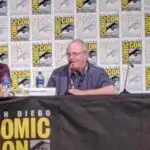
Joshua Starnes has been writing about film and the entertainment industry since 2004 and served as the President of the Houston Film Critics Society from 2012 to 2019. In 2015, he became a co-owner/publisher of Red 5 Comics and, in 2018, wrote the series “Kulipari: Dreamwalker” for Netflix. In between, he continues his lifelong quest to find THE perfect tomato soup and grilled cheese sandwich combination.